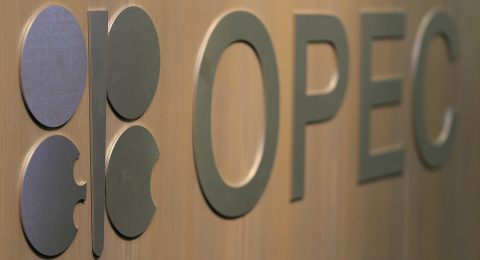The 12-member Organization of the Petroleum Exporting Countries’ (OPEC) crude oil production averaged 29.27 million barrels per day (b/d) in December, up 170,000 b/d from an estimated 29.1 million b/d in November, according to a just-released Platts survey of OPEC and oil industry officials and analysts.
Excluding Iraq, which does not participate in OPEC output agreements, the 11 members bound by quotas (OPEC-11) pumped an average 26.84 million b/d, up 140,000 b/d from November’s 26.7 million b/d, the survey found.
“This significant output jump from OPEC, in the absence of a group decision to raise production, is good news for consumers,” said John Kingston, Platts global director of news, suggesting the upward pressure on gasoline prices may be less than otherwise expected despite the fact that world demand appears to be recovering at a brisk pace.
Emphasizing other notable indications from the survey, John said, “Iran, despite running into sanctions-related payments problems all over the world, held its production at previous levels; good news from Iraq continued, with a decent one-month rise in output; and Saudi output increased at a smart rate, just as world demand is doing.”
Several countries increased output but Saudi Arabia, which boosted output to 8.35 million b/d from 8.22 million b/d in November, accounted for the bulk of the increase. It wasn’t clear how much of the increase in Saudi volumes was being exported.
Although world oil prices have been rising, last week reaching their highest levels since October 2008, Saudi Arabia’s internal consumption has been steadily climbing.
On Monday, as of midday U.S. East Coast time, front-month Brent crude futures traded between $93.60 and $95.82 per barrel (/barrel) and U.S. light crude between $88.13 and $89.98/b. These ranges are well below the record levels of more than $147/b seen in July 2008, but considerably higher than the $70-$80/b range favored by OPEC kingpin Saudi Arabia.
The latest Platts survey estimates show that the OPEC-11 overproduced its 24.845 million b/d target by 2 million b/d, which reduces compliance with the agreement to just 52.5% in December from 55.8% in November.
This target, which ministers agreed to maintain last month at their meeting in Ecuador, has been in place for two years despite the OPEC-11 having failed to reduce output to anywhere near official levels.
Last week, International Energy Agency Chief Economist Fatih Birol said oil prices had entered a “dangerous zone,” one which threatened to derail the fragile global economic recovery.
OPEC’s view on the oil price climb is very different. Secretary General Abdalla el-Badri said on the sidelines of the meeting in Ecuador that higher prices of around $90/b were not hurting the world economy and emphasized that because of the weakness of the U.S. dollar, they were not as high as they seemed. Indeed, he said, OPEC members were “comfortable” with such prices.
Qatar Oil Minister Abdullah al-Attiyah last week blamed seasonal factors and the harsh northern hemisphere winter for the price rise and said oil markets were well supplied.
OPEC’s current president, Iranian Oil Minister Masoud Mirkazemi, said on January 10 that oil prices were much lower in real terms and that a further rise in prices to $100/b would not be a concern.
“If crude oil prices even go up to $100/b, we will not be worried,” he said, quoted by students’ news agency ISNA.
“There is no need [for OPEC] to hold an extraordinary meeting,” he said.
OPEC has scheduled its next ordinary meeting for June in Vienna. Several ministers have said they do not expect the group to call an extraordinary meeting before then.
(Source Rigzone)











